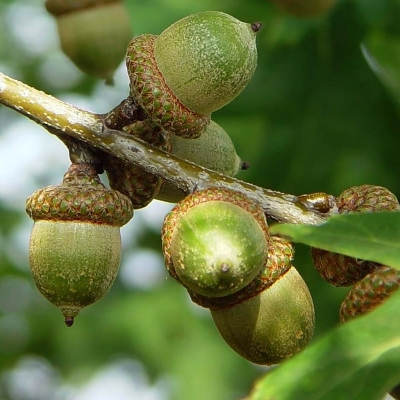White Oak is a classic and timeless cabinet material, due to its strength, durability and the beauty of its bold grain patterns. Further, its dense closed cell structure make White Oak an excellent choice for kitchens where wood is exposed to steam, water, grease and daily use.
Hardwood Characteristics
All wood is a product of nature, and nature provides differences in the soil and weather conditions that will affect grain patterns and color. These variations are what create the beauty of real wood: the infinite variation of grain, texture, and color.
The natural variations in White Oak can appear throughout an order of cabinets, showing up from board to board, in cabinets, doors, drawers, and even on the same door panel.
It is the nature of hardwoods to have mineral streaks (light brown, dark brown, black, green, red or white to black areas in the wood) and great variation in graining. White Oak is prized for its prominent grain patterns that can vary from a light grain to an irregular or “curly” grain.
These variations in color and grain pattern are what make wood cabinets desirable. If your client wants perfectly matched and consistent doors and drawers, have them order man made materials. For wood lovers, these variations are very attractive, occur naturally and are considered a desired effect. Finished cabinets will be unique, especially when they get a stained finish that emphasizes and exhibits the natural grain of the wood.
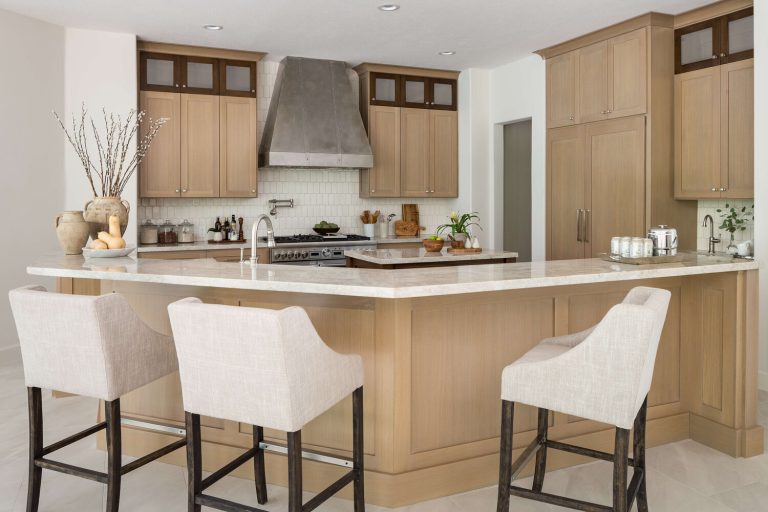
Different Cuts of White Oak
White Oak can be cut in three different ways:
- Plain or Flat sawn
- Quarter sawn
- Rift sawn or rift cut as it is typically referred to in the cabinet business
Each cut starts with a full log cut at a different angle, and the different cuts affect how the grain will look. White Oak can sometimes be cut with a combination of Rift and Quarter cuts. This explains how you might get a combination of characteristics in a cabinet door.
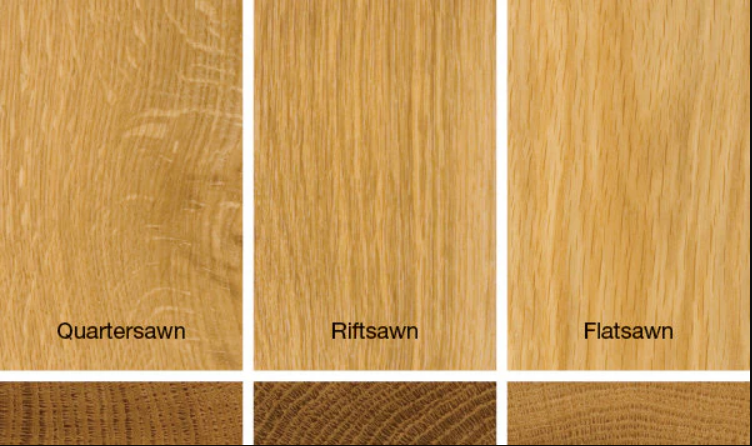
Plain Sawn or Flat Sawn White Oak
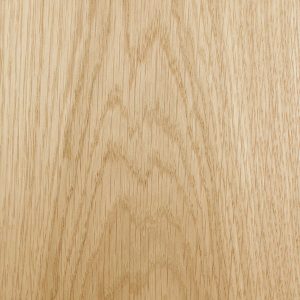
Plain sawn or flat sawn White Oak has been used in what we consider “traditional” designs, but today’s designers have taken what was old and made it new. When stained in a light stain and paired with white painted cabinets, there is nothing old fashioned about it, as this photo shows.
Plain or Flat Sawn White Oak
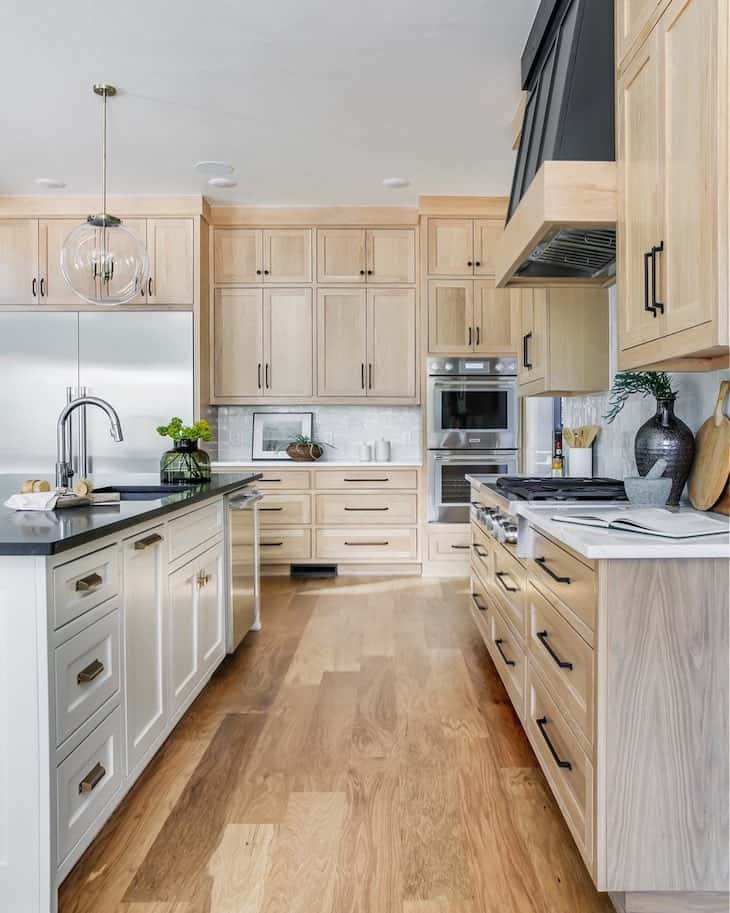
Quarter Sawn White Oak
Quartersawn White Oak (QSWO) is admired for its distinctive grain pattern, which became very popular with Arts and Crafts and Mission-style furniture.
The cutting method is more costly but gives planks a consistent, straight grain pattern with an intriguing “fleck” across the grain.
This fleck is the result of the medullary rays that are characteristic of White Oak. The Medullary Rays radiate from the center of the log like the rays of the sun. They become clearly visible in QSWO and show up across the face of the board like brush strokes.
QSWO is produced by quartering the log and then sawing it perpendicular to the growth rings. This cut splits the medullary ray, causing the “flake” or “flecks” that can range anywhere from very bold and dramatic to pale and subtle.
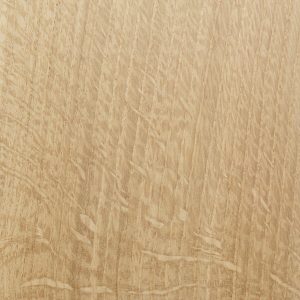
Quarter Sawn White Oak
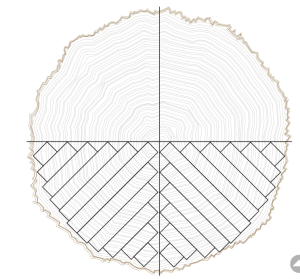
Illustration of how White Oak is cut to create Quarter Sawn
When staining QSWO wood, the grain really stands out. The rays and flecks absorb the stain differently, creating an eye-catching contrast.
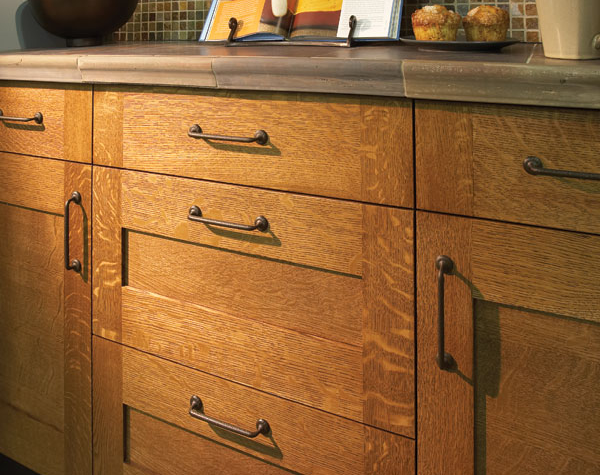
Rift Cut White Oak
Rift cut White Oak is prized for its striped grain that is perfectly suited to contemporary designs. Some designers prefer rift cut White Oak’s straight grain pattern to the plain cut grain pattern with its variations. It is also preferred by some because it has less fleck pattern than QSWO.
The rift cut planks are cut from quartered White Oak logs in a tilted process that makes every cut perpendicular to the annual growth rings. This method of milling is similar to quarter sawn, but with the angle of the cut changed slightly. Thus, there are fewer saw cuts parallel to the medullary rays, which cause the flake effect.
Cutting the wood this way yields the distinctive striped grain pattern but means only about 40% of any log is used to create planks. The rest is waste, making rift cut White Oak cabinets more expensive than those built from plain sawn.
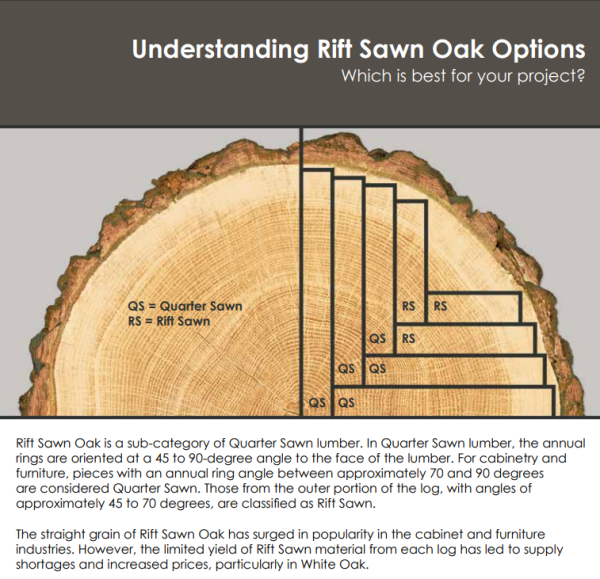
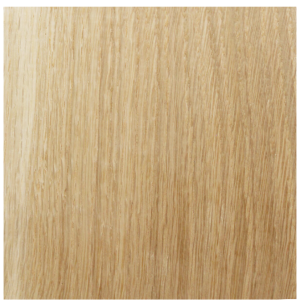
Rift Cut White Oak
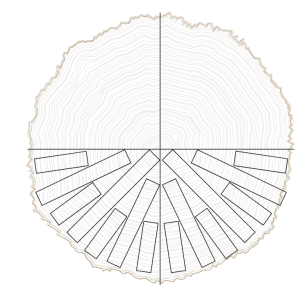
Illustration of how White Oak is cut to create Rift Cut
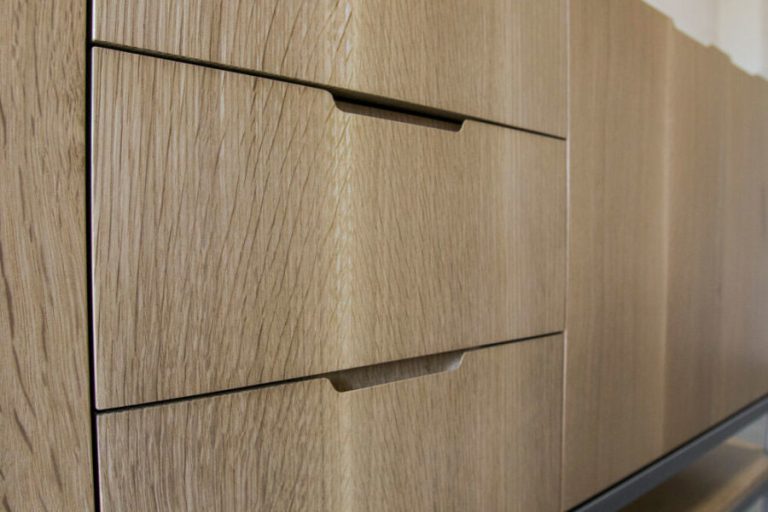
Stained Finishes on White Oak
Before it is stained, White Oak has a warm, golden brown tone with green and gray undertones. Staining the cabinets highlights the natural grain of the wood and offers a traditional look because the grain will be accented by the stain.
White Oak’s large, open grain pattern allows it to absorb stains easily and evenly, anything from pale browns all the way to deep, espresso-like finishes. It does not get blotchy with darker finishes like some woods do. Natural and light stains will show off Oak’s beautiful grain patterns, making them more apparent when compared to medium to heavy stains.
Process To Get Stained Finish
Stains are sprayed on and then hand wiped. After the stain dries, sealer is applied, and cabinets are sanded again. And then the final topcoat, conversion varnish, is applied. This process produces colors with good clarity and excellent grain definition in the wood.
Rough end grain presents an issue for stained finishes. The exposed end grain edge of door frame stock is a wider, more open grain that absorbs more stain, and, as a result, finishes darker. To avoid it finishing darker, an end grain sealer is used, then the ends are sanded with different grit paper than the face of the front.
Dealer Responsibility When Selling White Oak
In this article, we’ve outlined the characteristics of White Oak. We described the various ways White Oak can be cut and what those cuts look like. We talked about how White Oak is prized for its beautiful grain patterns, in addition to being strong and durable. We looked at how White Oak takes stain.
When you have a client who wants an Oak kitchen, it’s your responsibility to talk to them about these characteristics of White Oak and make sure they understand the strong, distinctive grain patterns and what the wood will look like after it’s stained.
When staining the wood, the grain really stands out. The rays and flecks absorb the stain differently. People who think they want White Oak need to see what it can look like.
We encourage you to have several White Oak doors, in different cuts and finishes, available to show clients. By showing multiple samples and explaining the unique features of White Oak, especially Quarter Sawn White Oak, your clients will be able to make an informed decision about the materials being used.
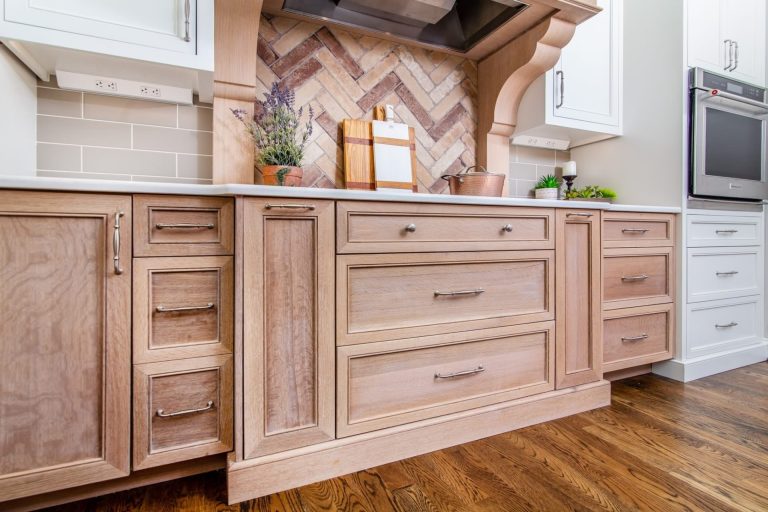
My Cabinet Lines that Offer White Oak
The cabinet lines I sell that offer White Oak
The Cabinet Industry is not the only one concerned with the future of Oak
The cabinet industry wants to make sure there will be sufficient supply of Oak to keep building cabinets into the future. A recent tv interview with the Kentucky Distillers Association shows us that they are also concerned about future supplies of Oak. However, they are doing more than talking about having the White Oak their industry members need to make bourbon barrels.
Kentucky distillers are stepping up efforts to preserve the future of the bourbon industry. They’re doing so by making sure they will have enough white oak trees, which are used to make bourbon barrels. In 2021, the University of Kentucky planted a study in the fields of Maker’s Mark. Now, 8,000 young trees and saplings, representing 400 varieties, are being measured. Spanning 25 acres, it is the most diverse research planting of its type and the world’s largest repository of American White Oak trees.

